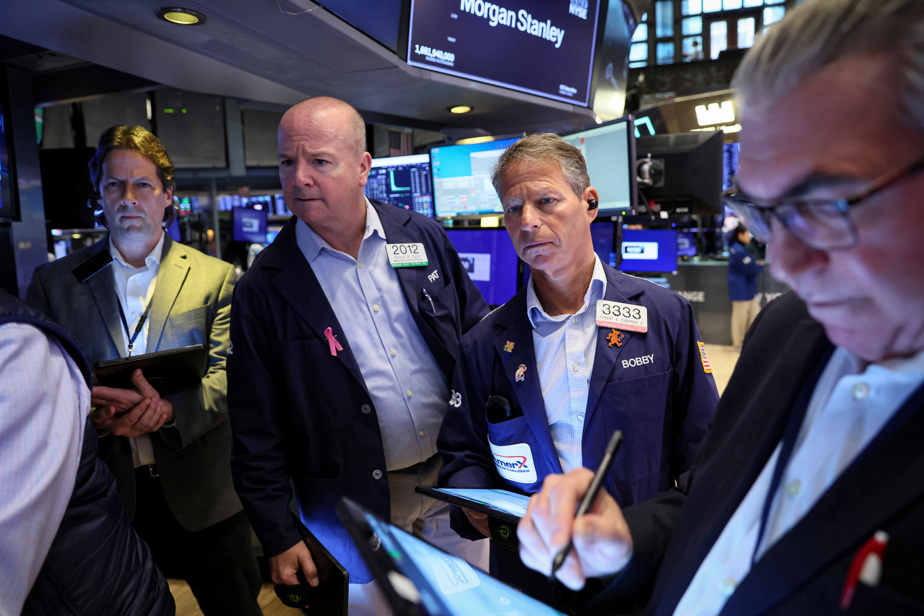(New York) The New York Stock Exchange ended lower on Wednesday, scalded by the president of the American central bank (Fed) Jerome Powell, who ruled out any short-term rate cut, after the institution proceeded to a new bearing.
The Dow Jones returned 0.80%, the NASDAQ index fell 0.46% and the broader S&P 500 index fell 0.70%.
The indices were moving in the green before the decision of the Fed, which raised its key rate by a quarter of a point to bring it to a range between 5% and 5.25%, a first for more than 15 years.
The market’s initial reaction was positive, as the Federal Reserve did not indicate that it expected further hikes, unlike the previous meeting.
During his press conference, Jerome Powell nevertheless declared that a “decision relating to a pause (had) not been taken” on Wednesday, the Fed not ruling out additional increases in the months to come.
The Chairman of the Fed also ruled out one or more short-term rate cuts, provided that the American economy followed the trajectory anticipated by the central bank, namely a “mild” recession, which displeased investors and pass the indices in the red, but always within tight margins.
The operators nevertheless continued, on Wednesday after the Fed’s communication, to count on at least three rate cuts by the end of the year.
In tune, bond rates eased, a sign of a market that sees the US central bank bend before 2024. The yield on 10-year US government bonds stood at 3.36% against 3.42% the day before in fence.
“I feel like the general consensus is that the tone was more offensive than accommodating,” commented Steve Sosnick of Interactive Brokers.
“It seems the market didn’t get everything it wanted, but got everything it expected,” said Art Hogan of B. Riley Wealth Management.
For Steve Sosnick, the monthly report on US employment, expected on Friday, could stir up the indices much more than the Fed did on Wednesday.
“The Fed is moving according to the indicators, and (this report) is crucial” to take the pulse of the labor market and the pace of wage growth, said the analyst.
On this chapter, the New York Stock Exchange received with reserve the monthly data of the cabinet ADP, which showed that 296,000 jobs had been created in the private sector in April, that is to say double the estimates of the economists.
“It did not react much because ADP is not always a good indicator of the figures of the report on employment” expected Friday, which is published by the Ministry of Labor and considered more reliable.
On the stock market, after two terrible days, the American regional banks PacWest (-1.98%) and Western Alliance (-4.48%) fell more moderately, but remain in bad shape.
Falling bond yields benefited so-called growth stocks, including Tesla (+0.19%) and Alphabet (+0.13%).
On the other hand, the semiconductor manufacturer AMD (-9.22%) fell, weighed down by forecasts deemed disappointing for the second quarter, due to the slowdown in demand in certain market segments, PCs in particular, despite results exceeded expectations in the first quarter.
Starbucks fell (-9.17%), also due to forecasts seen as cautious, despite quarterly results above estimates.
The Eli Lilly laboratory (+6.68%) took advantage of the publication of encouraging clinical trials for its Donanemab treatment, according to which it “significantly” slows down the progression of Alzheimer’s disease.
The cosmetics group Estée Lauder plunged (-17.34%) after missing the target for its quarterly net profit and lowering its annual forecast. In question, the slower-than-expected restart of travel in Asia, which is affecting revenues from points of sale in airports.
